
The Navy Department Library
Matthew Fontaine Maury
14 January 1806 - 1 February 1873
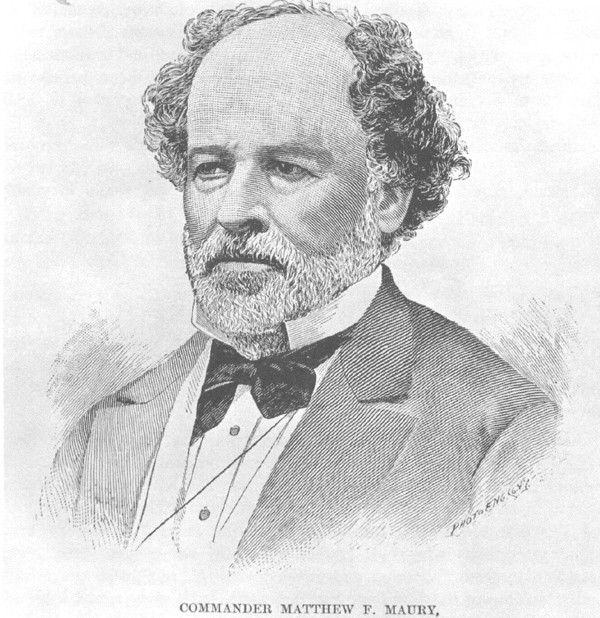
by Captain Miles P. DuVal, Jr., USN (Ret.)
A Naval Historical Foundation Publication
The military role of the Navy is the control of the seas. To accomplish this goal, the Navy must know all about them. No one was more aware of that requirement, even during the infancy of the American Navy, than Lt. Matthew Fontaine Maury.
At the age of 36, Maury culminated ten years of intensive original work in what was then called Hydrography by becoming the Officer-in-Charge of the Navy's Department of Charts and Instruments. Established in 1830, this unit later became the Naval Observatory and Hydrographic Office in 1842.
In that same year, the Board of Commissioners of the Navy was superseded by the Bureau system of Naval Organization. Although Secretary of the Navy Upshur had recommended a separate Bureau of Hydrography, Congress instead created a Bureau of Ordnance and Hydrography, with William Ceaver as its first chief. He was assisted by one draftsman and three clerks.
When the Bureau of Navigation was created in 1862, it was intended as a scientific bureau. The Naval Observatory, the Hydrographic Office, the Nautical Almanac Office, and the Naval Academy were all assigned to it. Between 1889 and 1909, however, cognizance of practically all scientific activities was assigned to the Bureau of Equipment. In 1909, the Bureau of Equipment was abolished and cognizance of the Naval Observatory and Hydrographic Office reverted to the Bureau of Navigation. When the functions of the Bureau of Navigation were redefined in 1942 and its name changed to Bureau of Personnel, the control of both the Naval Observatory and Hydrographic Office was given to the Office of the Chief of Naval Operations.
By that time, Oceanography had been given a separate section in the Hydrographic Office, and in 1943 the Joint Chiefs of Staff made the Navy responsible for all military oceanographic data. In 1962, an act of Congress changed the name of the Hydrographic Office to the Naval Oceanographic Office. In 1966, SECNAV Instruction 5430.165 established the Office of the Oceanographer of the Navy and prescribed its mission:
The mission of the Oceanographer of the Navy is to act as the Naval Oceanographic Program Director for the Chief of Naval Operations, under the policy direction of the Secretary of the Navy, through the Assistant Secretary of the Navy (Research and Development) and to exercise centralized authority, direction and control, including control of resources, in order to insure an integrated and effective Naval Oceanographic Program.
Ultimately, Presidential Reorganization Order No. 4 of 30 Oct 1970 established the National Oceanographic and Atmospheric Administration within the Department of Commerce. The status of the Navy within that organization, however, remains unclear.
Foundation members will be interested in the foresight and accomplishments of young Lieutenant Maury more than 125 years ago. This biography of Maury, first given as a lecture before the Daughters of the Confederacy in the old House of Delegates Hall at the State Capitol, Richmond, Virginia, is intended to highlight Maury's many contributions to Naval Science. It is published with the permission of its author, noted historian and lecturer Captain Miles P. DuVal, Jr., USN (Ret.)
Maury charted the Navy's course to the fascinating and mystical world of oceanography—a world that includes all of the basic sciences as they apply to marine problems. His ideas still challenge us today to carry on in this field so essential to the Navy's role in our National Security.
Matthew Fontaine Maury: Benefactor of Mankind
(By Miles P. DuVal, Jr.)
Prologue: "EVALUATION OF CAREER" OF
MATTHEW FONTAINE MAURY
(Born January 14, 1806, died February 1, 1873; appointed February 1, 1825, resigned April 20, 1861)
Author, First Book on Nautical Science by an American Naval Officer, 1836.
First Superintendent, U.S. Naval Observatory, 1844-61.
First Hydrographer, U.S. Navy, 1844-61.
Precursor, U.S. Weather Bureau, 1843-57.
Founder of the science of oceanography.
Father of world meteorology.
Pathfinder of the seas.
Locator of the first transatlantic cable.
Advocate of naval reform and reorganization.
Champion for establishment of the U.S. Naval Academy.
Prophet of the Panama Canal.
Planner for Amazonian, Mississippian, and Antarctic explorations.
Leader for international cooperation in Antarctic research.
Inventor of the first electrically controlled submarine mine successfully used in warfare.
Introducer of chinchona cultivation into Mexico.
Author of public school geographies.
Father of the Virginia Polytechnic Institute.
Madam President, members of the United Daughters of the Confederacy, distinguished guests, ladies and gentlemen, it is indeed a great privilege to address this fine gathering of traditional Americans in this historic hall. Within these walls one can almost hear the echoes of long ago when Virginia, in a proceeding of the utmost solemnity on April 23, 1861, confirmed the appointment of Gen. Robert E. Lee, as the commander in chief of its land and naval forces.
Among those in that memorable scene was the man whose memory we, as fellow Virginians, honor today: Matthew Fontaine Maury. Who was he and what was the story behind his presence?
Early Years, 1806-25
Born on a farm in Spotsylvania County, Va., near Fredericksburg, on January 14, 1806, he was of distinguished mixed Huguenot, Dutch, and English ancestry, with traditions of culture and scholarship, and with lines tracing to early Jamestown. From his father, Richard Maury, he inherited much of his amiability and high-mindedness; from his mother, Diana Minor Maury, he derived the qualities of great decision and strength of character.
In his fifth year, the Maury family, like so many others of that period, moved to Tennessee and established a new home near Franklin in Williamson County, south of Nashville. Working on the farm and attending an "old field" school, where young Matthew took part in "singing geography" with pupils ranged around the room to chant geographical facts, he seemed destined for a life behind the plough but, when he was 12 years old, something happened. In the exercise of his boyish instinct for adventure, he climbed a tree and fell 45 feet to the ground. Taken up apparently lifeless, he was found to have injured his back so seriously as to unfit him for farm work. This resulted in his father deciding, because of his son's high aptitude for study, to send him to Harpeth Academy near Franklin, then headed by Rev. James H. Otey, afterward the first Anglican bishop of Tennessee.
At Harpeth, Maury's active mind and studious habits quickly attracted the notice of its capable teachers who encouraged him. In the study of Latin, he covered the grammar in 7 days, making a record for the academy and demonstrating high capacity for learning languages. Moreover, he helped to support himself by assisting his instructors and coaching pupils. His greatest interest became science.
The inspiration for this ambition was a shoemaker, an old Mr. Neal, who was a mathematician. He worked his problems with an awl on leather and returned repaired shoes with soles covered with X's and Y's. "The example of that man," Maury later wrote, "first awakened in my breast the young spirit of emulation; for my earliest recollections of the feelings of ambition are connected with the aspiration to emulate that man in mathematics."1
Choosing a Naval Career, 1825
When the time came for further education, young Maury, sufficiently recovered, considered going to West Point but his father did not approve. Inspired by the adventures of his oldest brother, John Minor Maury, who had served under David Porter on the famous cruise of the Essex in the Pacific during the War of 1812, Matthew determined to enter the Navy and secured an appointment as an acting midshipman from Representative Sam Houston of Tennessee.
Faced with the opposition of his father who wished his son to be a physician, Matthew proved resourceful. He arranged for the purchase of a horse for $75 to be paid on reaching his destination and was given $30 by one of his most admired teachers, William C. Hasbrouck, for his services in coaching young pupils. Then, on a Sunday morning in the spring of 1825, the 19-year-old Maury set out alone on the long ride to Washington to start his career with the determination to succeed by following the old maxim, "Make everything bend to your profession."2
Stopping by the Spotsylvania home of an uncle by marriage, Edward Herndon, to whom he sold the horse, Maury immediately sent the money to the owner in Tennessee. But more important, he met Ann Hull Herndon, daughter of Dabney Herndon, of Fredericksburg, who, though only 13, recognized his quality and evinced an affectionate regard for him that the young midshipman never forgot.
First Cruise on the "Brandywine," 1825-26
Reaching Washington penniless, Maury receiving 15 cents per mile travel allowance, which was ample for his needs, he was ordered to the new frigate Brandywine then at anchor in the Potomac and reported on board on August 13, 1825. His first assignment proved a stroke of fortune.
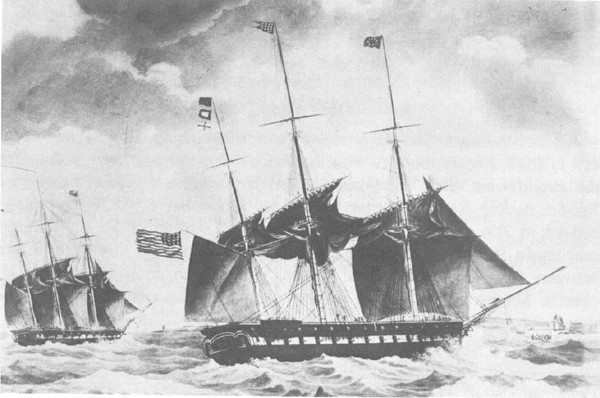
The Brandywine, named for the Battle of Brandywine Creek in which Lafayette was wounded, had been selected to return the distinguished soldier to France. As an honor to him, her officers had been selected from as many States as possible and, where practicable, from descendants of persons who had distinguished themselves in the American Revolution. Thus Maury had an opportunity not only to make new friends from different parts of the Nation, but also to converse with the wartime associate of Washington.
After Lafayette departed, the Brandywine underwent repairs in England and in early November joined the U.S. squadron at Gibraltar. She cruised in the Mediterranean and returned to New York in May 1826.
Right from the start of this assignment, Maury impressed his superiors and fellow cadets as one resolved to master the theory and practice of the naval profession. To this end he resorted to various artifices. While on watch he would chalk problems in spherical trigonometry on round-shot mounted in racks so he could ponder them while pacing the deck. When going below for a moment, he would get hold of a book or dictionary, note a word or a sentence and reflect upon it on deck. Required to study navigation, he used a Spanish textbook so as to learn a new language at the same time.
Having crossed some of the paths of Columbus, Magellan, Drake, and Nelson, seen new countries and peoples, and applied himself assiduously, Maury completed his first cruise with his education advanced, his vision broadened, and his ambition spurred by the leadership of such men as Capt. Charles Morris, who, as a midshipman, had served under Stephen Decatur in Tripoli, and Lt. David Glasgow Farragut, who later became the first admiral of the U.S. Navy.
Around the World, 1826-30
After receiving his official warrant as midshipman dated back to February 1, 1825, Maury took leave in Fredericksburg and was again ordered to the Brandywine, then fitting out at New York for a 3-year cruise in the Pacific. Sailing from the outer harbor on September 3, 1826, the vessel arrived at Rio de Janeiro on October 28—a voyage of 55 days. After cruising in Brazilian waters, his ship went to Montevideo at a time of war between Brazil and Argentina. There Midshipman Maury was able to observe history in the making and to record his experiences and impressions of people.
Rounding Cape Horn into the Pacific in late 1826, the Brandywine, after a stay at Valparaiso, Chile, went on to Peru, arriving on February 9, 1827, at Callao. There, on March 10 Maury was transferred to the Vincennes, a sloop of war then patrolling the west coast of South America.
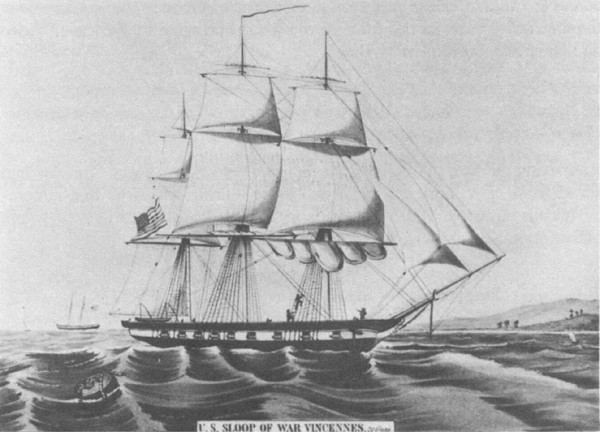
For more than 2 years in this area, Maury was thus able to view the matchless Andes while his vessel was at sea until their peaks became familiar landmarks, observe volcanoes in thunderous eruptions, and when ashore in Ecuador, to witness fighting at Guayaquil.
After hostilities ended, the Vincennes, on July 4, 1829, sailed from Callao toward the Far East. The first stop was at Nukahiva Island in the Marquesas, the island where Maury's oldest brother, John, had been marooned for 2 years and later rescued.
To learn the story directly from the native chief, Midshipman Maury studied the native language and, within a period of 3 weeks, became able to converse with the man who had saved his brother's life.
The next visit was at Tahiti, after which the Vincennes sailed to the Hawaiian Islands. On Hawaii, Maury saw the Cascade of the Rainbow and, no doubt, visited the volcano of Kilauea; on Oahu, he saw Diamond Head and enjoyed Honolulu.
Setting sail for China, the Vincennes passed between Formosa and Luzon and, on January 3, 1830, anchored in Macao Roads—the second American man-of-war to visit Chinese waters. Promptly sailing for the Philippines for a stop at Manila, the Vincennes started on her homeward voyage through the Straits of Sunda between Sumatra and Java, thence across the Indian Ocean and around the Cape of Good Hope to Capetown, thus retracing some of the trails of the great Portuguese navigators, Vasco da Gama and Bartholomew Diaz.
The next port was at St. Helena where Maury saw the temporary tomb of Napoleon, who had died 9 years previously after 6 years as a prisoner of war.
Arriving in New York on June 8, 1830, nearly 4 years after he had sailed from New York on the Brandywine, during which he had circumnavigated the earth, Midshipman Maury returned as an experienced young officer of unusual promise and a wealth of knowledge.
Preparation for Scientific Investigation, 1831-34
In the months on shore following his detachment from the Vincennes, Maury studied for promotion examinations. After passing them he had the rank of passed midshipman. During the next winter spent in Washington, Ann Hull Herndon, then a charming young lady, also happened to visit relatives in Georgetown; and again they met. They became engaged and Maury considered resigning from the Navy but his hope for employment as a surveyor did not materialize.
Assigned at the age of 25, after 6 years' service, to the responsible position of sailing master on the sloop of war Falmouth, bound for the Pacific, Passed Midshipman Maury wished to make a speed record for the voyage. A diligent search by him for information about the winds and currents that would be encountered and the best routes to follow, proved fruitless. Thus the Falmouth had to depart in June 1831 without the advantage of the navigational experience of others in recorded form. Because of this obvious need, young Maury determined to be the one to supply such information and, on the way to Rio, conceived the idea of his wind and current charts and began to collect data from every available source.
When rounding Cape Horn, he observed its dangers of navigation and investigated the "curious" phenomenon of "low barometer" there. Arriving at Valparaiso in October, the Falmouth tarried for about a year and went on to Callao. There Maury made a survey of San Lorenzo Island just outside the harbor.
Landing on some rocks to the westward of the island to take the necessary observations at a time when the sea was smooth, Maury went ahead with his work while his assistant, Midshipman William B. Whiting, stood by in a boat. A wind arose and the sea roughened to the point that the boat could not land.
Maury climbed to a high point on the rock, removed his jacket, wrapped up his sextant and watch with it, tied the pack with a string he had in his pocket, and threw the roll into the water near the boat, where it was picked up with a boathook. Then, when the water rose to a favorable height, he leaped into it, and swam to the boat. No wonder Midshipman Whiting after return from the outing asserted to his shipmates that there was in Maury something that "could not be kept down" and that he "would be a distinguished man."3 As could be expected of young officers, they ridiculed this prediction of future greatness.
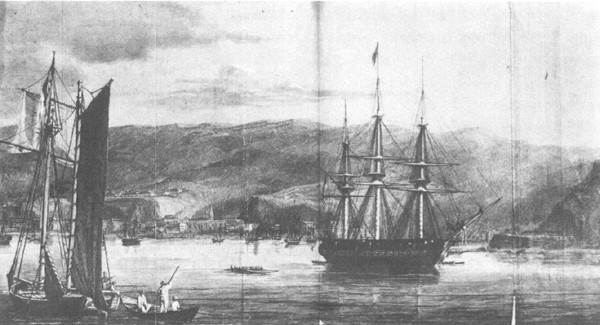
Maury was transferred from the Falmouth at Callao on August 20, 1833, to the schooner Dolphin. After a few weeks on routine duties he was ordered to the frigate Potomac, which started upon its long voyage home, arriving at Boston in the early summer of 1834.
This cruise, 1831-34, which was his last, had not only enabled Maury to start his scientific investigations in meteorology and oceanography, supplied data for his first writing and provided a solid foundation for his later contributions, but also had afforded an opportunity to read many classics of literature during long hours at sea. His favorites were the Bible and Shakespeare, which he constantly read and frequently quoted, and which are reflected in the philosophy and clarity of his writings.
Early Success Marred by Calamity, 1834-39
Obtaining leave, Maury went to Fredericksburg and, on July 15, 1834, he and Ann Hull Herndon were married in nearby Spotsylvania County in the same house in which the two first met, and then established their home in the city. Also in this July were published in the American Journal of Science and Arts, Maury's first two scientific articles, both in the same issue. The first, "On the Navigation of Cape Horn," described the dangers of passage round that cape and the peculiar rise and fall of the barometer that he had observed there. The other, on a "Plan of an Instrument for Finding the True Lunar Distance," concerned an instrument that he had invented.
Thus encouraged, Passed Midshipman Maury, then only 28, decided to prepare a textbook on navigation. Assembling his notes, written mostly on board men-of-war "in the midst of the various calls of duty, and the thousand interruptions incident to such a place," he prepared the manuscript for his book, "A New Theoretical and Practical Treatise on Navigation," published in 1836. This was the first book on nautical science by an American naval officer. It was immediately adopted for the instruction of young officers at sea and was later used at the Naval Academy.
Among its reviewers was Edgar Allan Poe, who stated: "The spirit of literary improvement has been awakened among the officers of our gallant Navy. We are pleased to see that science also is gaining voteries from its ranks. Hitherto how little have they improved the golden opportunities of knowledge which their distant voyages held forth, and how little have they enjoyed the rich banquet which nature spreads for them in every clime they visit. But the time is coming when, imbued with a taste for science and a spirit of research, they will become ardent explorers of the regions in which they sojourn."4
While in Fredericksburg, Maury lectured on science, studied mineralogy, geology, and drawing, spent the summer of 1836 qualifying himself to superintend a nearby U.S. gold mine, and was offered a position as mining engineer. His appointment on June 10, 1836, as lieutenant caused him to decide to remain in the Navy and he became interested in the naval south sea exploring expedition, which, in the fall of 1836, was fitting out at Norfolk under Capt. Thomas Ap Catesby Jones. Failing to secure command of one of the ships, on March 18, 1837, he was attached temporarily to the Macedonian.
In September, Lieutenant Maury joined the exploring expedition as "astronomer" and "hydrographer" two of its most significant positions. In preparing for this assignment, he went to Philadelphia and studied and worked at a small astronomical observatory on Rittenhouse Square and there obtained invaluable scientific knowledge and experience.
When Capt. Catesby Jones' health failed, he was succeeded in command of the expedition by Lt. Charles Wilkes, the only officer in the Navy with whom Maury would not cooperate. In the spring of 1838 Maury
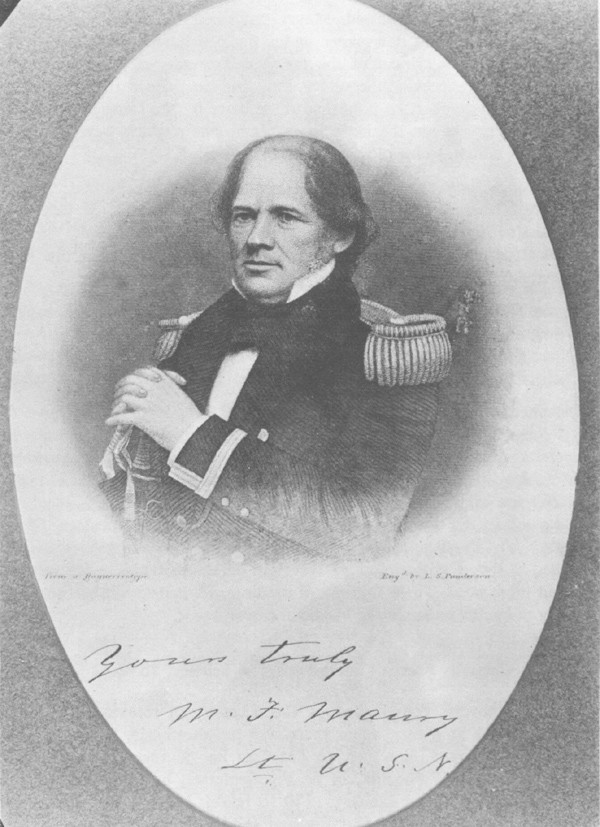
requested to be detached and was assigned duty on the steamboat Engineerto assist in surveying our southern harbors.
In the summer that followed, Maury published an interesting series of articles in a Richmond newspaper under the pen name of "Harry Bluff,5 U.S. Navy." Highly critical of the previous Secretary of the Navy, they called upon his successor, Secretary Paulding, to restore the prestige of the Navy. In December, he published three more for the same paper giving detailed information on the inefficiency of the Navy which were inscribed "From Will Watch, to his old messmate, 'Harry Bluff.' "6
Stressing the importance of better training for officers, he stated: "There is not, in America, a naval school that deserves the name, or that pretends to teach more than the mere rudiments of navigation. * * * Why are not steps taken to have our officers educated and fitted for this high responsibility? The idea of a naval academy has been ridiculed."7
Again Maury toyed with the idea of leaving the Navy and, in February and August 1839, offered his services as head of a triangulation party to Ferdinand R. Hassler, the Chief of the U.S. Coast Survey, but Hassler did not accept them.
Detached from the Engineer in August of 1839, Maury took leave to spend some time at his home in Fredericksburg and to visit his parents in Tennessee. Leaving Harpeth by stage coach to join the brig Consort at New York to continue his survey work, he gave up his seat inside to an aged Negress and rode on the outside with the driver. On a rainy night at 1 o'clock in the morning, on October 17, 1839, near Lancaster, Ohio, the coach was upset, and Maury who was the only person seriously hurt, sustained a severe dislocation of the right knee joint and a fracture of the right thigh bone. These injuries, at the time, seemed to him as the great calamity of his life endangering his naval career.
Calamity Forces Concentration on Science, 1839-42
Maury's recovery, complicated by the necessity of rebreaking and resetting the bone at a time when there was no anesthesia, was slow and painful. He managed, however, to keep up his courage during 3 long months at the Hotel Phoenix, in nearby Somerset, by studying French. Sufficiently recovered by January 1840 to travel, he went to New York to join his ship but, finding that she had sailed, he made his way to his home in Fredericksburg to recover his health and strength.
The compelled physical inaction forced Maury to focus on the scientific aspects of the naval profession and gave him an opportunity to write a series of remarkable articles, published in Richmond during 1840-41 under his previous pen name of "Harry Bluff." He called them "Scraps From the Lucky Bag."8
Elaborating on the ideas presented in his earlier "Harry Bluff" and "Will Watch" writings, Maury urged reform of the Navy, which was then in a condition of dry rot. He advocated steam for ship propulsion, the importance of the Northwest in developing trade with the countries on the rim of the Pacific, the improvement of the promotion system for officers to spur their ambition, and the founding of a naval academy with a 4-year course, followed by 2 years at sea, to replace the ineffective schoolmaster system then obtaining on ships. His strong leadership for the last was probably the greatest single factor in bringing about, in 1845, the creation of the Naval School at Annapolis and has won Maury wide acclaim as "Father of the Naval Academy."
Even more significant, however, was his pleading for distribution of the work of the Navy Department among bureaus on functional lines, with officer specialists heading these bureaus and responsible to the Secretary of the Navy. He even envisioned assignment of an experienced officer as the principal naval adviser of the Secretary to coordinate the work of the bureaus.9
As Maury's writings aroused high enthusiasm among naval officers, some of them arranged for large editions of the "Scraps From the Lucky Bag" for free distribution. Finally, in July 1841, Maury was identified as the real author.10 Congress jumped into the fray and many of the naval reforms that Maury advocated were effected immediately or eventually adopted. There were also demands for the President to appoint Lieutenant Maury as the Secretary of the Navy, but this did not appeal to him for he was already dedicated to science.
Feeling sufficiently recovered to perform light duties at sea, Maury, in November, 1841, requested assignment in the Pacific squadron under Commodore Thomas Ap Catesby Jones, but his physicians in Fredericksburg opposed and he was retained on the "waiting orders" list.
He did not have to wait long. The publication of his book on navigation in 1836 and his "Scraps From the Lucky Bag" in 1840 and 1841 had already laid the foundation for his future. On the recommendation of other naval officers, Lieutenant Maury on July 1, 1842, at the age of 36, was designated by Secretary Upshur as officer in charge of the Depot of Charts and Instruments of the Navy Department. For one of his intelligence, vision, and drive, this was the challenging opportunity for which he had been waiting and he undertook the task with the zeal and abundance of genius.
Setting the Course for the Naval Observatory, 1842-47
When Maury assumed control of the Depot of Charts and Instruments, it was already planned that its functions would include four important fields related to the problems of navigation: astronomy, hydrography, magnetism, and meteorology.
When new buildings, which included an astronomical observatory, were completed, Lieutenant Maury, on October 1, 1844, was ordered to take charge of all astronomical operations as the first superintendent of the Naval Observatory. In assuming this responsibility Maury was no mere figurehead administrator but an inspiring leader. Working at times from 8 or 9 in the morning until 11 at night, he was effective in obtaining and installing new instruments until the Observatory became one of the best equipped in the world. As a principal observer of celestial bodies during his first years as superintendent, his name is recorded in published abstracts of observations. That he found such work stimulating is shown by this description in an 1849 address before the Virginia Historical Society: "To me the simple passage through the transit instrument of a star across the meridian is the height of astronomical sublimity.
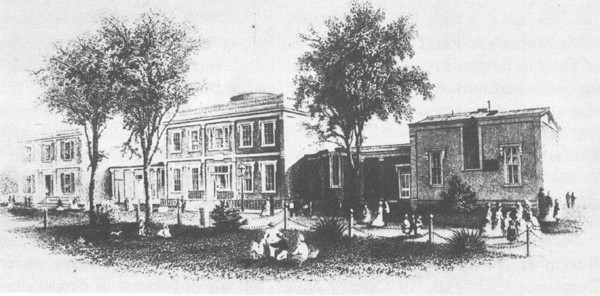
"At the dead hour of the night, when the world is hushed in sleep and all is still; when there is not a sound to be heard save the dead beat escapement of the clock, counting with hollow voice the footsteps of time in ceaseless round, I turn to the Ephemeris and find there, by calculations made years ago, that when that clock tells a certain hour, a star which I never saw will be in the field of the telescope for a moment, flit through and then disappear. The instrument is set; the moment approaches and is intently awaited—I look—the star mute with eloquence that gathers sublimity from the silence of the night, comes smiling and dancing into the field, and at the instant predicted even to the fraction of a second, it makes its transit and is gone. With emotions too deep for the organs of speech, the heart swells out with unutterable anthems; we then see that there is harmony in the heavens above; and though we cannot hear, we feel the 'music of the spheres.'"11
Understanding the function of time in the determination of longitude, Maury recognized the value of the electrochronograph when it was invented and arranged for its installation at the Observatory—the forerunner of daily time signals.
Starting in 1845 a major project of cataloguing the stars, this work reached the total of 100,000 in 1855, but the results were not published until 1873. Nevertheless, his 1846 report, which Maury described as the "first volume of astronomical observations that has ever been issued from an institution properly entitled to the name of an observatory on this side of the Atlantic,"12 won wide approval.
Deploring the fact that, if not supplied with nautical almanacs by foreign countries, American vessels of war could not navigate on the high seas, Maury planned to make the preparation of an American Ephemeris and Nautical Almanac as prime functions of the Observatory. Because of the eminent professors at Harvard, the Nautical Almanac Office was initially established there in 1849 but many years later was moved to the Observatory. The first nautical almanac was published in 1852 for the year 1855.
In 1847, while Maury's scientific endeavors were being acclaimed, a young astronomer in France, aided by another in Germany, discovered the planet Neptune, hailed by astronomers as "one of the proudest triumphs of the age."13 Because of its apparent slow movement, the calculation of its orbit would have required many years.
Maury, realizing that data which the "tedious future is sure to supply" might be obtained from the records of the past, in the fall of 1846, assigned the task of searching earlier observations to one of his astronomers, Sears C. Walker. On February 2, 1847, after months of work, Walker discovered that the planet Neptune had been erroneously identified in 1795 as a fixed star. Maury, in a letter on February 9, 1847, to the Secretary of the Navy reporting the discovery, commended Walker for his service. This identification saved astronomers more than 50 years in determining the orbit of Neptune.
It was by such leadership that Lieutenant Maury launched the Observatory on its path to greatness in the course of which he never failed to give full credit to his able assistants.
Many have wondered how Maury, who was not a professional astronomer, should assume the responsibility of heading the Observatory. He later explained that he wished to prove "that Navy officers are fit for something else than scrubbing decks at sea and tacking ship."14
Charting the Winds and Currents of the Sea, 1842-51
Soon after taking charge of the depot, Maury started examining old log books then treated as little more than trash and discovered that they contained useful information for plotting winds and currents encountered by ocean navigators. By 1847 his researches had reached the stage where he was able to publish his first "Wind and Current Chart" of the North Atlantic.
Accompanied by special logs with forms to be filled and instructions, copies of these charts were distributed to mariners who would agree to cooperate. Interest spread rapidly and by 1851 more than 1,000 vessels in all oceans were sending him reports. From these were constructed track charts, trade wind charts, pilot charts, thermal charts, and whale charts, in addition to the wind and current charts. Moreover, Maury was the first to make a comprehensive study of the Gulf Stream.
How well did Maury's plan for taking advantage of winds and currents work? Previously the average passage from New York to San Francisco required 188 days but in 1851 the Flying Cloud one of the famous Yankee clippers of that era, made this voyage in 89 days and 21 hours. The voyage to Australia, previously requiring 120 days each way, was reduced by one-third and that to the Equator by 10 days. Such savings in sailing time meant many millions annually to ocean commerce and won the praise of the world, especially from mariners, one of whom wrote Maury that "until I took up your work, I had been traversing the ocean blindfolded."15
In examining Maury's carefully drawn original charts, made clear by the use of colors, one is impressed by the depth and scope of Maury's vision, by the magnitude of the task, and by the tremendous drive required to see it through to completion; by the trade routes clearly defined and by the intense concentration of sailing observations around key points, such as Cape Horn and the Cape of Good Hope.
There is no wonder that he developed a keen strategic insight and, when commenting on the ultimate result of constructing the Panama Railroad, he could write: "The railroad across the Isthmus of Panama will speedily lead to the construction of a ship canal between the two oceans, for a railroad cannot do the business which commerce will require for it; and by showing to the world how immense this business is, men will come from the four quarters to urge with purse and tongue the construction of a ship canal." That was a century and a quarter ago.
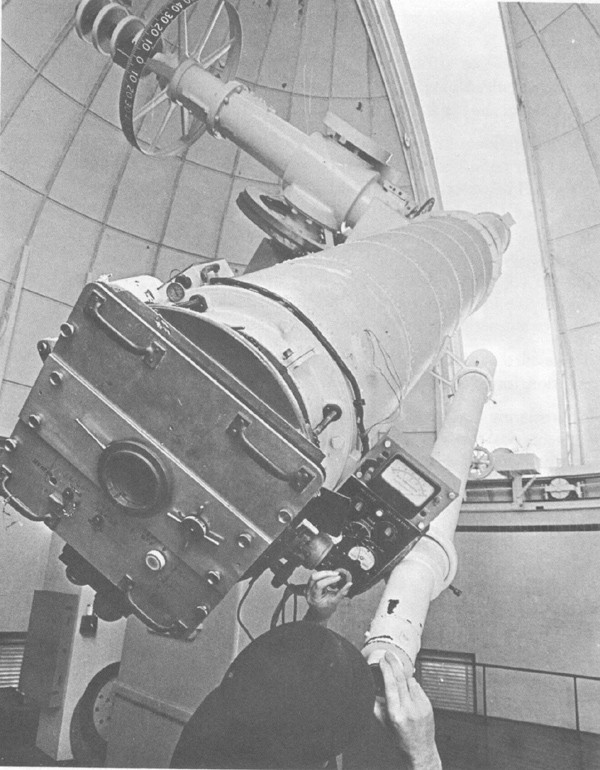
Even more gratifying, however, when examining Maury's original charts, is to see how he unfailingly allowed his subordinates who did the laborious work to take full credit by inscribing their names on charts prepared under his guidance. Not only that; he knew the value of praise. No wonder Maury was able to attract and to hold men of capacity to help in a work that revolutionized navigation and established Maury as the founder of the science of oceanography.
The navigational investigations of Maury were not limited to the oceans. In 1843, he published an article advocating systematic observations of the rise and fall of water on the Mississippi and its tributaries. A naval lieutenant, selected for this purpose, was directed by Maury to make an accurate cross section of the river off Memphis and observe the velocity of the current at the bottom and near the surface so as to obtain data for calculating the volume of flow; to take daily samples of river water, evaporate it, and determine the amount of silt; and to make daily observations of air and water temperature, evaporation and rainfall.
These carefully made observations, later digested by Maury, formed the foundation for all subsequent research and study of that great river.
Appreciating the needs of river navigators, Maury originated the plan for placing watermarks or gages at principal towns on the Mississippi so that captains of riverboats could be informed by telegraph to the stages of the water. He foresaw that the data supplied by these gages would enable the determination of the effects of upstream freshets on the lower sections of the river.
No wonder that his daughter, Diana Fontaine Maury Corbin, could write: "Every feature and lineament of his bright countenance bespoke intellect, kindliness, and force of character. His fine blue eyes beamed from under his broad forehead with thought and emotion, while his flexible mouth smiled with the pleasure of imparting to others the ideas which were ever welling up in his active brain."16
Drive for a Comprehensive Weather Service, 1843-57
The full organization that Maury hoped to create was to include a comprehensive weather service as well as astronomy and hydrography. Having started small scale meteorological work, he sent his first "weather journal"17 for the week ending January 14, 1843, to a Washington paper for publication, and before 1851 conceived the idea of a universal system of meteorological observation on both land and sea.
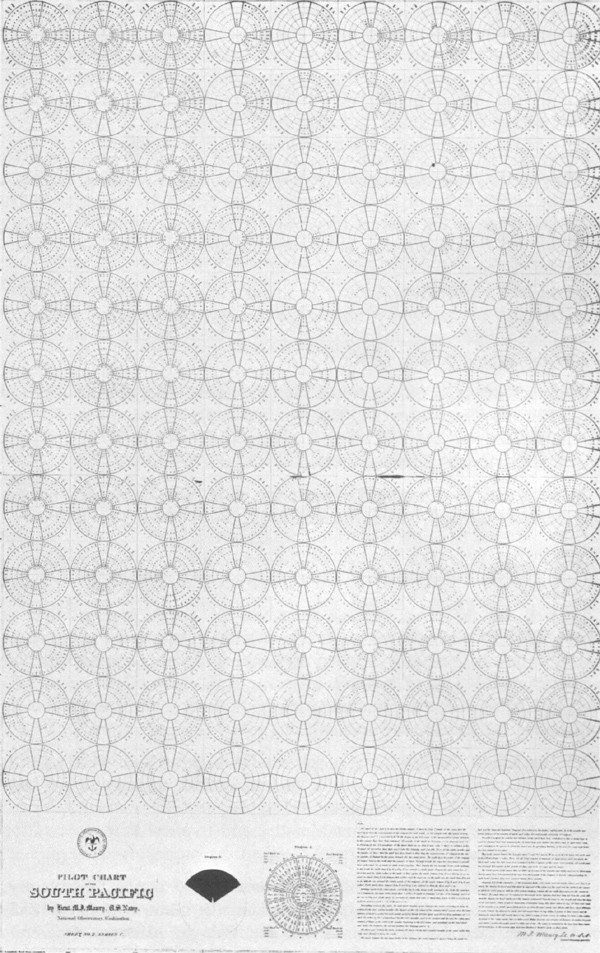
Understanding that weather activities then "under the control of the different States, of the institutions, and of the private citizens"18 of the Nation amounted to several hundred and that the United States had "no control whatever" over their "time for observation, their mode and means for observing, and their method of recording results," Maury sought to create under his direction a "telegraphic meteorological bureau"19 to receive and evaluate reports and formulate weather forecasts.
Viewing the atmosphere as an "ocean of the air" enveloping the earth, in many addresses he urged the farmers of the Nation to do on land what ships had done on the seas, as they would be benefited in respect to their crops as had been navigation and commerce. Blocked by official obstructions, he revealed this difficulty in 1856 before the North Alabama Mechanical and Agricultural Society in fighting words: "Take notice now, that this plan of crop and weather reports is 'my thunder'; and if you see some one in Washington running away with it, then recollect, if you please, where the lightning came from."20
Although an 1857 bill to create the telegraphic meteorological bureau as part of the Observatory and Hydrographical Office was reported favorably, the Congress did not act and Maury was diverted from this great objective by mounting domestic tensions.
Nevertheless, by planting the seeds for what later transpired, he was the precursor of the Weather Bureau.
Locating the First Transatlantic Cable, 1849-58
So well did the oceanographic researches of Maury progress that by March 1849 he could state that "some new discovery, some new fact or law of nature is constantly starting up before us as we proceed with our investigations."21 One of his objectives was exploration of the ocean bottoms and he started taking soundings of the Atlantic—a necessary prelude for locating the first transatlantic cable.
By the fall of 1852, Maury constructed a contour map of the North Atlantic Ocean bottom with a profile on latitude 39°, off the coast of New Jersey to Europe as a preliminary survey essential for making a sound recommendation on so important a matter and to show that some of the deepest water was along this parallel.
Aided by a deep-sea sounding apparatus designed at the Observatory, he was able to secure the first specimens from the ocean bottom in 1853, to determine their composition, and to establish the existence of a submarine plateau. In a letter to Secretary of the Navy Dobbin on February 22, 1854, he described it as having been placed especially for the purpose of holding the wires of a submarine telegraph and of keeping them out of harm's way. It is neither too deep nor too shallow."22 He called it the "telegraphic plateau."
Thus, it was only natural that Cyrus W. Field, the able leader for the trans-Atlantic cable, should consult Maury. Their close association lasted until the cable was laid from Newfoundland to Ireland along the line on the telegraphic plateau as recommended by Maury. The first official message over it was sent on August 16, 1858. Field, Maury, and others who contributed received the praise of the world.
In the light of the facts now available, it is clear that it was Maury's knowledge that made this great achievement possible and established him as the locator of the first transatlantic cable.
Starting World Meteorology, 1853
In the course of his work on wind and current charts, Lieutenant Maury saw that there were vast areas of the world for which he had insufficient data on weather as well as on ocean currents and that other nations could aid in gathering information. By 1851 he was striving for a world meteorological organization.
Drawing up a proposal for an international maritime conference as the first step, he was able to arrange for the United States to send out official invitations for a meeting convened on August 23, 1853, at Brussels, Belgium. This was one of the first, if not the first, international scientific congresses devoted to consideration of one scientific subject ever to be held.
Invited to preside, Maury declined, but he did make the opening address outlining the purposes of the congress. Adopting the program for standardizing forms and instructions on reporting meteorological observations by vessels at sea, the conference served to spread Maury's ideas, and other nations joined the original 10 for putting them into effect.
Adjourning on September 8, the Brussels Conference was a huge success, and Lieutenant Maury, age 47, returned to Washington laden with honors. These include recognition by Alexander von Humboldt, the great German scientist, who declared that Maury had founded a new science, the "physical geography of the sea."
Resuming his work with renewed confidence and enthusiasm, Maury, when describing results of conference, wrote: "Rarely has there been such a sublime spectacle presented to the scientific world before all nations agreeing to unite and cooperate in carrying out according to the same plan one system of philosophical research with regard to the sea. Though they
Thus, it was only natural that Cyrus W. Field, the able leader for the trans-Atlantic cable, should consult Maury. Their close association lasted until the cable was laid from Newfoundland to Ireland along the line on the telegraphic plateau as recommended by Maury. The first official message over it was sent on August 16, 1858. Field, Maury, and others who contributed received the praise of the world.
In the light of the facts now available, it is clear that it was Maury's knowledge that made this great achievement possible and established him as the locator of the first transatlantic cable.
Starting World Meteorology, 1853
In the course of his work on wind and current charts, Lieutenant Maury saw that there were vast areas of the world for which he had insufficient data on weather as well as on ocean currents and that other nations could aid in gathering information. By 1851 he was striving for a world meteorological organization.
Drawing up a proposal for an international maritime conference as the first step, he was able to arrange for the United States to send out official invitations for a meeting convened on August 23, 1853, at Brussels, Belgium. This was one of the first, if not the first, international scientific congresses devoted to consideration of one scientific subject ever to be held.
Invited to preside, Maury declined, but he did make the opening address outlining the purposes of the congress. Adopting the program for standardizing forms and instructions on reporting meteorological observations by vessels at sea, the conference served to spread Maury's ideas, and other nations joined the original 10 for putting them into effect.
Adjourning on September 8, the Brussels Conference was a huge success, and Lieutenant Maury, age 47, returned to Washington laden with honors. These include recognition by Alexander von Humboldt, the great German scientist, who declared that Maury had founded a new science, the "physical geography of the sea."
Resuming his work with renewed confidence and enthusiasm, Maury, when describing results of conference, wrote: "Rarely has there been such a sublime spectacle presented to the scientific world before all nations agreeing to unite and cooperate in carrying out according to the same plan one system of philosophical research with regard to the sea. Though they may be enemies in all else, here they are friends. Every ship that navigates the high seas with these charts and blank abstract—logs on board may henceforth be regarded as a floating observatory—a temple of science."23 Moreover, the conference served to hasten the day for extending the uniform system of weather observations to the land as well as the sea, making Maury the father of world meteorology.
What were the physical characteristics of Maury at this time of his prime? As described by his daughter, he was "a stout man, and about 5 feet 6 inches in height; he had a fresh, ruddy complexion, with curling brown hair, and clear, tender, blue eyes. His massive head and strong neck surmounted broad and square shoulders, and a chest deep and full. His arms were long and strong, with hands small, soft, and beautifully formed--he was apt to use them in graceful gestures while conversing."24 His striking countenance clearly revealed great strength of character, tireless energy, high purpose, and decision.
Physical Geography of the Sea, 1855
In the sixth edition of his "Sailing Directions" of 1854, Maury included 90 pages of new information under the title suggested by Von Humboldt, "The Physical Geography of the Sea." His publishers in Philadelphia, recognizing its value for publication as a book, promptly warned Maury that some other publisher might "steal his thunder and reap a fortune on it."25
Thereupon, Lieutenant Maury, in the spring of 1854, started preparing what he thought would be his "great work." Published in 1855 under the title of "The Physical Geography of the Sea," the volume proved immensely popular and went through eight editions in the United States. The last, published in 1861 under the title of "The Physical Geography of the Sea, and Its Meteorology," was dedicated to William C. Hasbrouck, his former teacher at Harpeth Academy, in grateful appreciation of instruction accorded in earlier days, and as "a token of the friendship and esteem, from boyhood until now, of his former pupil." In Europe, the book was published in several languages and went through nine editions.
Its first paragraph is dramatic: "There is a river in the ocean. In the severest droughts it never fails, and in the mightiest floods it never overflows. Its banks and its bottom are of cold water, while its current is of warm. The Gulf of Mexico is its fountain, and its mouth is in the Arctic Sea. It is the Gulf Stream."26
<> While this volume was significant for many reasons, it is notable for it contained the "first satisfactory general circulation theory of the atmosphere."27
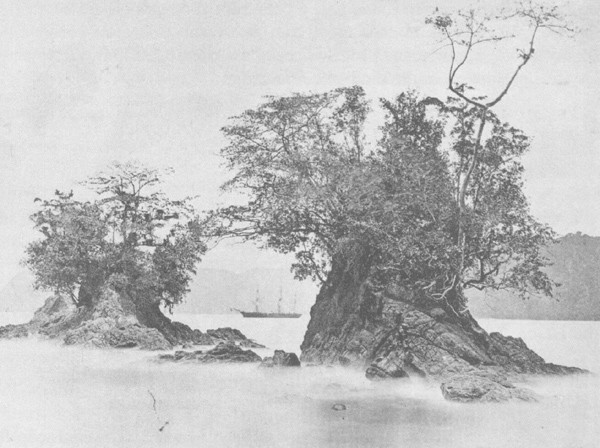
This success did not divert Maury from other tasks. Aroused by a dreadful collision in October 1854, in the North Atlantic, between the U.S. mail steamer Arctic and the French steamer Vesta in a thick fog 40 to 50 miles east of Cape Race, when some 300 persons were lost, Lieutenant Maury studied the benevolent suggestions that were made with the view of prevention rather than cure. The result was publication in 1855 of a chart double tracking the North Atlantic for steamers—a lane for westbound traffic and another for eastbound.
While in the midst of his constructive program and at the height of his fame, Maury received, without warning a letter from the Secretary of the Navy dated September 17, 1855. This advised him that the President had approved the recommendation of the Board of Naval Officers, created under the act of Congress to promote the efficiency of the Navy, for the transfer of Maury from the active service list to the Reserved list on leave-of-absence pay. It is significant, however, that the Secretary did not detach him from the Naval Observatory but directed that he continue his duty there.
Shocked by such treatment from a board engaged in implementing reforms for which Maury had worked so hard, he was severely wounded but fought back. Eventually, under the leadership of Senator Sam Houston, of Texas, who, over the years, had watched his protege's career with pride, the Congress set aside the action of the Naval Board responsible for Maury's forced retirement and, by special act, reinstated him on the active list with promotion to the rank of commander.
Few of the members of this Board are known today except in connection with the attempted retirement of Lieutenant Maury.
Efforts to Save the Union and Resignation, 1855-61
Long before 1855, Maury had discerned "tendencies toward disunion" of the United States and sought to avoid that catastrophe. Deploring slavery as a curse and knowing the Amazon from the 1853 report of its exploration by Lt. William Lewis Herndon, he saw the fertile valley of that mighty and unmatched stream as offering a possible means for saving the Union. Urging an agreement with Brazil to open the Amazon for free navigation for merchant vessels of all nations, he proposed the purchase and transfer of surplus slaves from the South to Brazil, then a slave country, but events were moving too rapidly for the plan to succeed.
Recalling how Virginia in 1832 had stepped forward as mediator in the time of nullification in South Carolina, in 1860 Maury addressed appealing letters to the Governors of Pennsylvania, New Jersey, Maryland, and Delaware urging them "to stand in the breach and stop this fratricidal strife."28
Notwithstanding the mounting domestic crisis in the United States, Maury, on March 31, 1860, wrote Secretary of the Navy Toucey urging an expedition to the South Pole. To his scientific colleagues abroad, he addressed many letters promoting "international cooperation" in Antarctic research. This campaign culminated on April 10, 1861, in official U.S. Government letters to European nations and Brazil, with detailed discussions for "international investigation" of Antarctica based upon Maury's experience over the two previous decades with many nations in ocean wind and current researches.29
Meanwhile, struggling heroically to avoid war between the sections of our country, he urged the "barrier States," including Virginia, to remain in the Union, opposed coercion of the seceded States, and advocated making the 1864 Presidential issue one for reannexation for a union that would be "happier and greater, and more glorious than ever." But all his efforts were in vain. The first shot of the Civil War was fired on April 12, 1861, at Fort Sumter, when he was working on plans for an expedition to the South Pole. Maury, forced by Virginia's secession to choose between participation in an invasion of his homeland or defending it, for better or worse, decided to share the fortunes of his State.
Working as hard as usual until 3 in the afternoon on April 20, the same day that General Lee resigned from the U.S. Army, Maury called in his secretary of 20 years' service, Thomas Harrison, and requested him to write his resignation from the U.S. Navy. This loyal secretary, like the disciples of Socrates when the time came for that philosopher to drink the fatal cup of hemlock, felt that Maury's resignation would cause the death of the scientific career of his illustrious superior and was overcome. He said, "I cannot write it, sir."30 Maury then wrote his own and left for Richmond, apprehensive of the tragedies that the war would inevitably bring.
War, Banishment, Exile and Death, 1861-73
Commissioned by Governor Letcher on April 23, 1861, as a commander in the Navy of Virginia, Maury was made a member of the Governor's executive council to prepare plans for defending the State in the shortest time. He assisted in fortifying Jamestown Island on the James River and Gloucester Point on the York to defend Richmond and sat with the council almost daily.
After the Virginia Navy was consolidated with that of the Confederacy, Maury was made a commander in the Confederate States Navy. Appointed as chief of the Naval Bureau of Coast, Harbor, and River Defense, Maury worked in his residence at 1105 East Clay Street in Richmond on developing the first electrically controlled submarine mine "successfully used against an enemy in warfare," which eventually caused the loss of more vessels than from "all other causes whatever." He supported the raising and rebuilding of the Merrimac and personally led a night attack by small craft on Federal vessels in Hampton Roads.
Conscious of the lack of a Navy by the South, Maury campaigned in the press for building one. As a consequence, demands grew for him to be appointed as Secretary of the Navy of the Confederate States. The end result was that in September 1862, Maury was ordered to England on "special service," partly because of the need for the Southern cause of a man of his stature in Europe and partly to banish him because of the jealousy of superior officials.
Arriving in England in November, Maury's activities included the purchase and fitting out of vessels for raiding Federal commerce, writing letters to newspapers, assisting in organizing a society for promoting the "cessation of hostilities," and drawing up petitions to the people of the United States for peace. He established relations with Emperor Napoleon III of France and Archduke Maximilian of Austria, who, on April 10, 1864, was proclaimed Emperor of Mexico, and devoted much time and attention to the development of mine warfare.
Sailing on May 2, 1865, to return home ready to assist in the war, Maury learned on reaching the West Indies of the collapse of the Confederacy and, on the advice of General Lee and other friends, decided not to return to Virginia. Instead, he sent a letter of surrender to the commander of the United States Forces in the Gulf of Mexico and went into voluntary exile in Mexico where he entered the service of Maximilian as Imperial Commissioner of Colonization.
Maury's plan was to encourage Virginians to migrate to Mexico and to establish a new Virginia. On learning of the proposal, General Lee wrote Maury: "The thought of abandoning the country, and all that must be left in it, is abhorrent to my feelings, and I prefer to struggle for its restoration, and share its fate, rather than to give up all as lost."31 The plan did not win popular support and failed.
Maury returned in March 1866 to England where his family was waiting to greet him. So changed in appearance had he become from the anxieties and hardships that he had experienced during the long separation that his children did not know him.
Maximilian, forced by mounting opposition to his rule, soon abolished the immigration scheme but offered to make Maury the director of the National Observatory, which was declined.
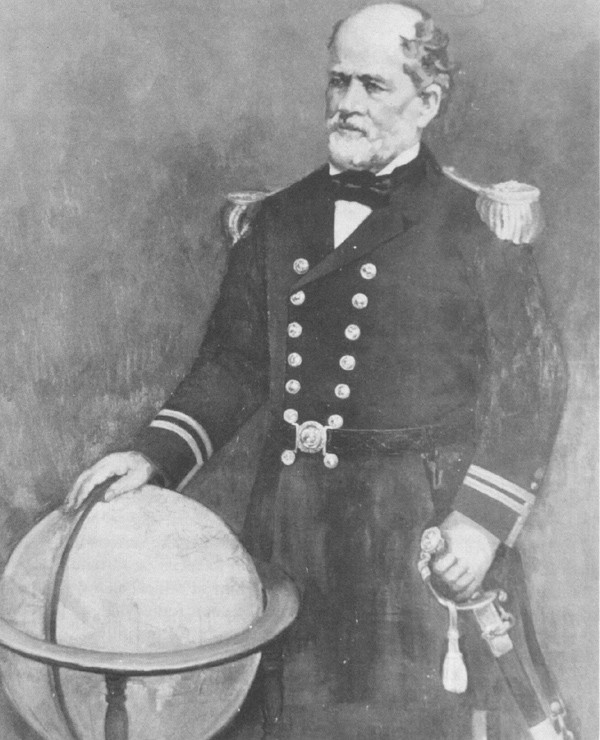
Maury never returned to Mexico but was able to make one lasting contribution to that country. Studying the climate of the area in South America on the eastern slope of the Andes from Colombia to Bolivia where the cinchone tree is native, he found a comparable climate in the State of Vera Cruz. Obtaining seeds through British friends, he introduced the cultivation of this medicinal tree, from the bark of which quinine is obtained.
Engaged while in England by a New York publisher to write geographies for public schools, Maury started upon a series that proved a tremendous success. Finally, offered an appointment at the Virginia Military Institute as a professor of physics, he took advantage of a general amnesty and returned to New York in July 1868 to resume his life in his homeland, adjacent to Washington College in Lexington, Va., where General Lee was the rector. While there Maury undertook the preparation of the "Physical Survey of Virginia" and lectured extensively, resuming his campaign for a universal system of telegraphic meteorological observations. In addition, he urged the creation of a State agricultural college as an adjunct to the Virginia Military Institute. This led to the establishment in 1872 at Blacksburg of the Virginia Agricultural & Mechanical College. Approached to see if he would accept appointment as its first president, Maury, because of his advancing years, declined.
After a strenuous lecture tour, Maury became ill, returned to his home at the Institute and died on February 1, 1873. Honored as one of Virginia's most illustrious sons, he was finally interred at Hollywood Cemetery in Richmond close to the graves of Presidents Monroe and Tyler.
Summation of Achievements
Many have theorized as to the explanation for the greatness of Maury's career in achievement but no explanation is so satisfying as that written on August 31, 1840, by the young Maury soon after the serious injury that changed the current of his life and caused him to focus on science: "When I became old enough to reflect, it was the aim at which all my energies were directed to make myself a useful man. I soon found that occupation, for some useful end or another, was the true secret of happiness."32
The strength of his youthful self-dedication is best shown by his sustained activities and achievements.
He was the author of the first book on nautical science by an American naval officer, the first Superintendent of the U.S. Naval Observatory, the first Hydrographer of the U.S. Navy, and precursor of the U.S. Weather Bureau.
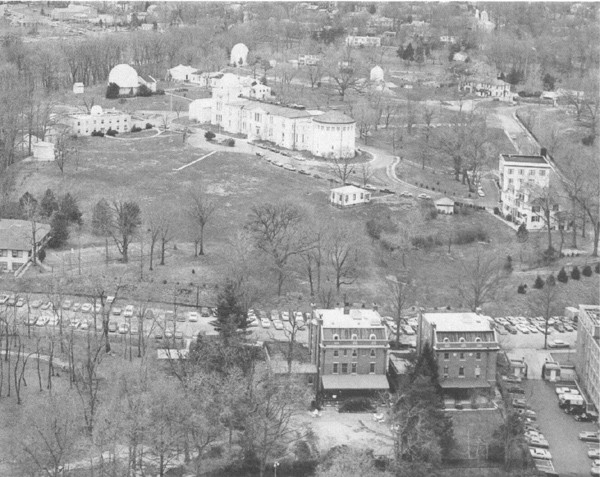
He was the founder of the science of oceanography, father of world meteorology, pathfinder of the sea, and the locator of the first transatlantic cable.
He was an effective advocate of naval reform and reorganization, champion for establishment of the U.S. Naval Academy, supporter of the construction of the Panama Railroad--prophet of the Panama Canal, planner for Amazonian, Mississippian and Antarctic explorations, and leader for international cooperation in Antarctic research.
He was the inventor of the first electrically controlled submarine mine successfully used in warfare and introducer of cinchona-quinine cultivation into Mexico.
He was the author of public school geographics and father of the Virginia Polytechnic Institute.
No wonder Maury has been acclaimed as having left his mark on every organization with which he worked and on every country in which he lived.
In Perspective
Were it possible for Maury to return to earth today, he would find that he had built far better than he realized, for the seeds he planted took root, sprouted, and developed into vital organizations and scientific activities.
At the Naval Observatory, he would see today one of the greatest astronomical organizations in the world, providing the essentials for safe navigation on the sea, in the air, and in space, in the form of accurate time and astronomical data. In its library he would find one of the finest collections of scientific literature. His bust in thoughtful expression looks over researchers as if to encourage them in the quest for knowledge.
At the Hydrographic Office, now renamed as the Naval Oceanographic Office, he would find it engaged in extensive research and worldwide surveying of the oceans, on and beneath the surface of the sea, publishing improved versions of his "Sailing Directions," still receiving reports that he initiated, from thousands of cooperating merchant vessels, and distributing modern editions of pilot charts, inscribed as being "founded upon the researches made in the early part of the 19th century by Matthew Fontaine Maury, while serving as a lieutenant in the U.S. Navy."
At the Weather Bureau, he would see the full realization of his plan for a "telegraphic meteorological bureau" in the form of highly effective weather services for the entire Nation, on land and sea, and in the air, utilizing the reports of thousands of volunteer observers as was urged by him as well as of regular stations and meteorological satellites, and engaging in vast research programs for bettering these services.
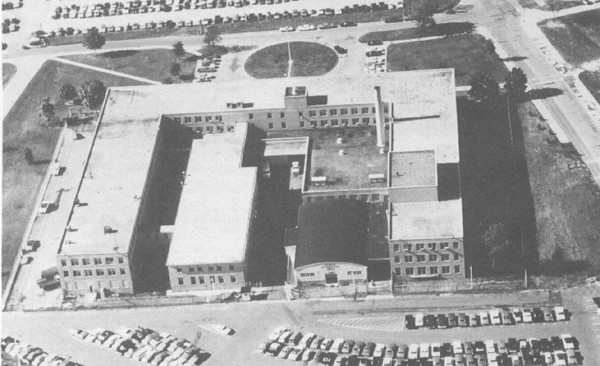
At Geneva, Switzerland, he would find the World Meteorological Organization, with its 120 member nations, which traces its origin to the 1853 Brussels Conference led by himself, engaged in standardizing weather observation methods for all nation and encouraging reports from areas insufficiently covered by observers, and at Monaco, he would see the International Hydrographic Bureau where 41 maritime nations pool their hydrographic and oceanographic knowledge for the benefit of the world.
At the Naval Academy, he would find a vigorous institution for instructing young naval officers, capable of adjusting its curriculums to the demanding needs of modern science.
At the Navy Department, he would see it organized into bureaus along functional lines headed by officer specialists responsible to the Secretary, with a Chief of Naval Operations as the Secretary's principal naval adviser and executive, as originally advocated by Maury.
As to the oceans, he would see vessels in the North Atlantic using "double-track" traffic lanes along the lines designed by him. Beneath its surface he would discover communication cables traversing all the seas, and his pioneer ocean-bottom investigations expanded into major activities for securing food and minerals. Even more satisfying, he would see republished in 1963 the eighth edition of his 1861 great work, "The Physical Geography of the Sea, and Its Meteorology."
In Mexico, he would find the cinchona-quinine tree still in cultivation; in Brazil, he would find free and open navigation of the Amazon to ports in Colombia and Peru; in Virginia, he would see a flourishing agricultural college at Blacksburg, known as the Virginia Polytechnic Institute; and in the United States and other countries, he would find electrically controlled mine fields protecting harbors during war.
In science, he would find that, during the International Geophysical Year 1957-58, some 70 nations had pooled their resources in a vast cooperative effort to study the earth and the sun and that 12 of these participated in Antarctic research, unbarring, as Maury had predicted, the "gates of south" and becoming "fellow citizens in the great republic of knowledge." He would also find that the 10th Pacific Science Congress, at Hawaii, August—September 6, 1961, had signally honored him by dedicating this Congress to his memory and by designating the published volume of its scientific papers as the Matthew Fontaine Maury Memorial Symposium.
Notwithstanding the magnitude of Maury's achievements and the wealth of individual honors that his works received during his life and thereafter, including election in 1930 to the Hall of Fame for Great Americans, the full significance of Maury's contributions has remained clouded, caused primarily by the passions of 1861-65 and the failure to collect in convenient form his extensive writings, which still remain diffused among the libraries of our own and foreign countries.
Now, the significance of Maury's benevolent achievements and what grew out of them can be evaluated objectively. They transcend the boundaries of Virginia and Tennessee, the United States, Mexico, and other countries, the naval profession, and even the oceans. Indeed, his mighty achievements and scientific impulses may be likened to the great ocean currents themselves, carrying beneficence to all lands and peoples. Thus, his influence has become universal, and places him in the galaxy of the Nation's immortals as a benefactor of mankind.
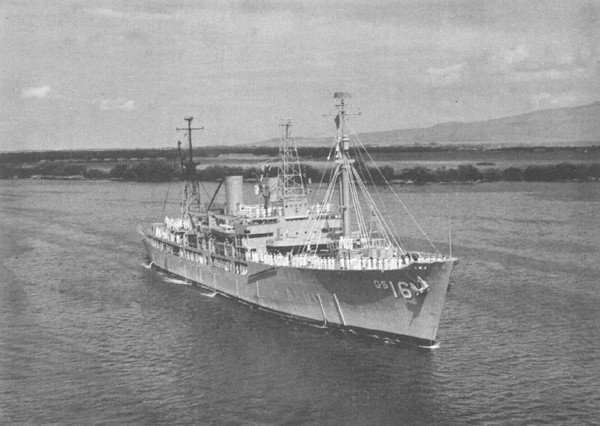
FOOTNOTES
Bibliography
R. M. Brown. "Bibliography of Commander M. F. Maury," Bulletin Virginia Polytechnic Institute. 24. No.2 (December 1930).
Jaqueline Amber Caskie. Life and Letters of Matthew Fontaine Maury. Richmond, VA: Richmond Press, Inc., 1926.
Diana Fontaine Maury Corbin. Life of Matthew Fontaine Maury. London: Sampson Low, Marstan, Searle & Rivington, 1888.
J. A. Furer. Administration of the Navy Department in World War II. Washington, DC: Government Printing Office, 1959.
Wm. Lewis Herndon. Exploration of the Valley of the Amazon. Washington, DC: Robert Armstrong, Public Printer, 1853.
Wm. Lewis Herndon. Exploration of the Valley of the Amazon. Edited by Hamilton Basso, New York: McGraw-Hill Book Co., 1952.
Patricia Jahns. Matthew Fontaine Maury and Joseph Henry: Scientists of the Civil War. New York: Hastings House, Publishers, 1961.
Charles L. Lewis. Matthew Fontaine Maury: "The Pathfinder of the Seas." Annapolis, MD: U.S. Naval Institute, 1927.
Matthew Fontaine Maury. "On the Navigation of Cape Horn." American Journal of Science and Arts 26 (July 1834), 54-63.
Matthew Fontaine Maury. "Plan of an Instrument for Finding the True Lunar Distance." American Journal of Science and Arts 26 (July 1834), 63-65.
Matthew Fontaine Maury. A New Theoretical and Practical Treatise on Navigation. Philadelphia, PA: E. C. and J. Biddle, 1836.
Matthew Fontaine Maury. The Physical Geography of the Sea. New York: Harper and Bros., 1855.
Matthew Fontaine Maury. The Physical Geography of the Sea, and Its Meteorology, 8th edition (revised). New York: Harper and Bros., 1868.
Matthew Fontaine Maury. The Physical Geography of the Sea, and Its Meteorology. Reprint of 8th edition, edited by John Leighly, Belknap Press of Harvard University Press, 1963.
Richard L. Maury. A Brief Sketch of the Work of Matthew Fontaine Maury During the War 1861-65. Richmond, VA: Whittet & Shepperson, 1915.
Sir Napier Shaw. "Manual of Meteorology." Vol. 1. Meteorology in History. Cambridge, England: University Press, 1932.
John W. Wayland. The Pathfinder of the Seas. Richmond, VA.: Garrett & Massie, 1930.
Gustavus A. Weber. The Naval Observatory: Its History, Activities and Organization. Baltimore, MD: Johns Hopkins Press, 1926.
Donald R. Whitnah. A History of the United States Weather Bureau. Urbana, IL: University of Illinois Press, 1961.
Frances Leigh Williams. Matthew Fontaine Maury: Scientist of the Seas. New Brunswick, N.J.: Rutgers University Press, 1963. Contains a comprehensive bibliography of the published works of Matthew Fontaine Maury.
American Geophysical Union of the National Academy of Sciences.--National Research Council. "Antarctic Research: Matthew Fontaine Maury Memorial Symposium of the 10th Pacific Science Association," at the University of Hawaii, Honolulu, Hawaii, August 21—September 6, 1961. Geophysical monograph No.7, 1962.
U.S. Naval Observatory. "Astronomical Observations," vol. 1. Washington, DC: J. & G. S. Gideon, Printers, 1846.
U.S. Naval Observatory. "American Ephemeris and Nautical Almanac," 1964. Washington, DC: Government Printing Office, 1962.
Virginia Military Institute, Headquarters. "In Memorium Matthew Fontaine Maury," 1873.
Manuscript
James M. Beall. "The Forces Leading to the Transfer of the Weather Service From the Army to the Department of Agriculture," 1962 (unpublished thesis, available at the Weather Bureau, Washington, DC).
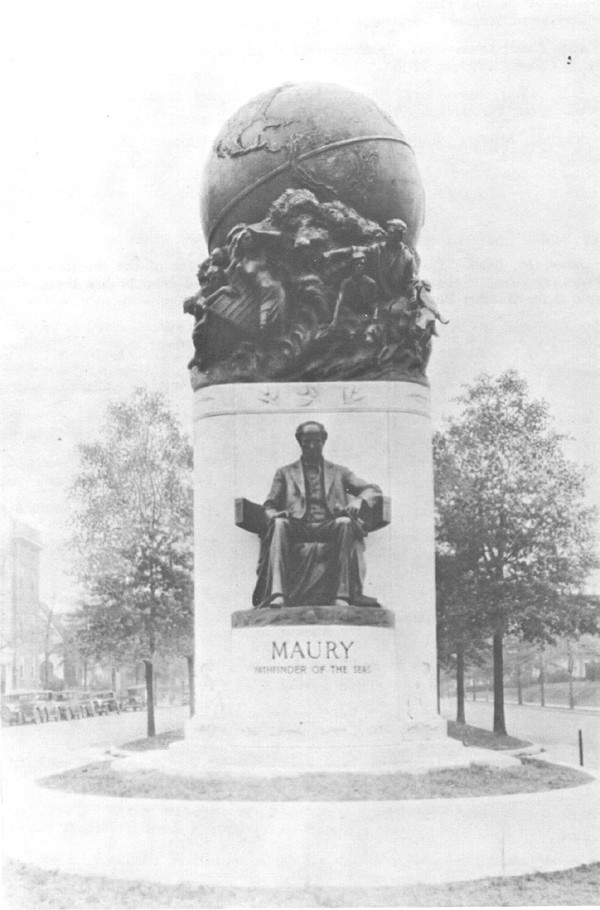
[END]



